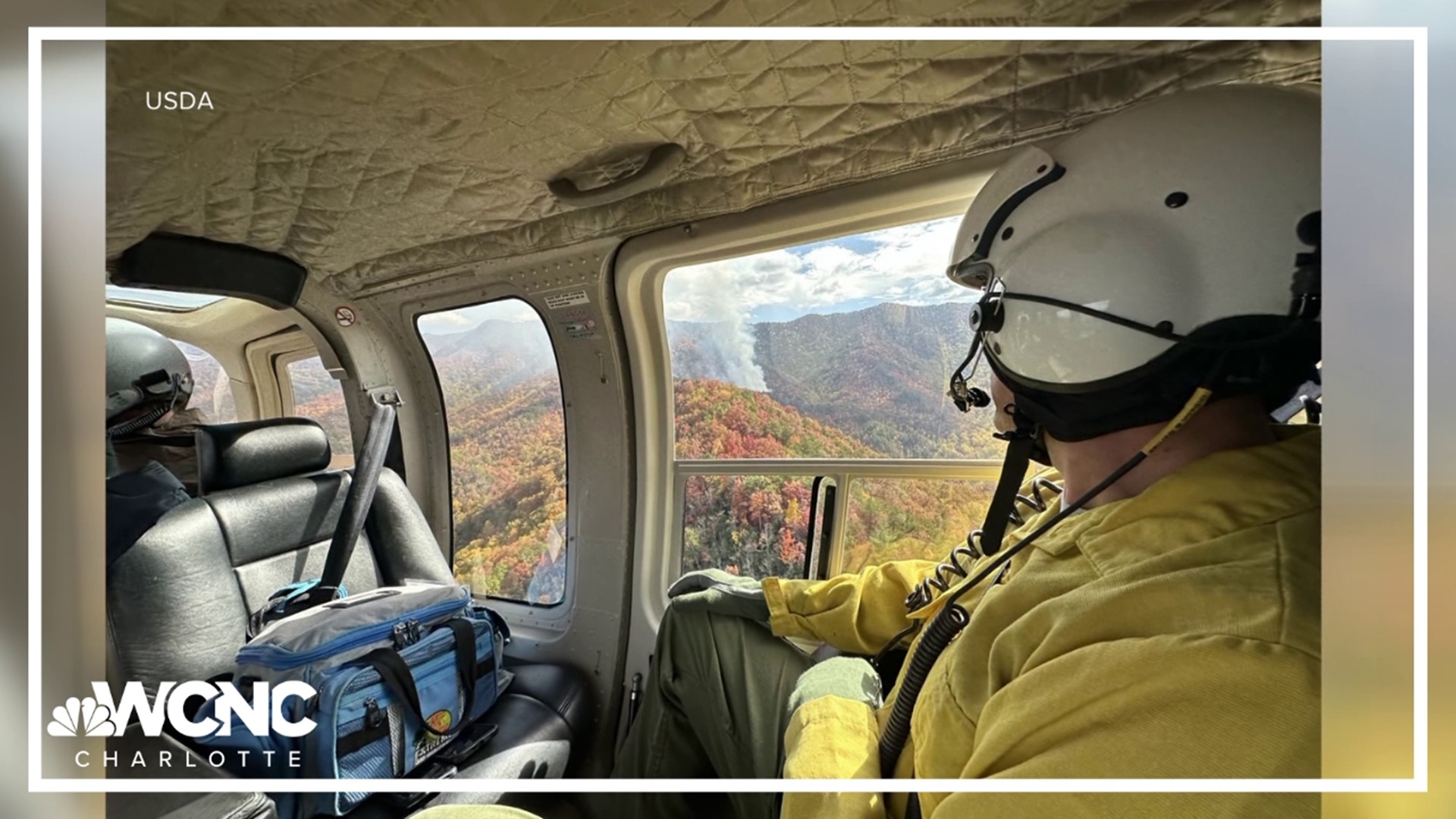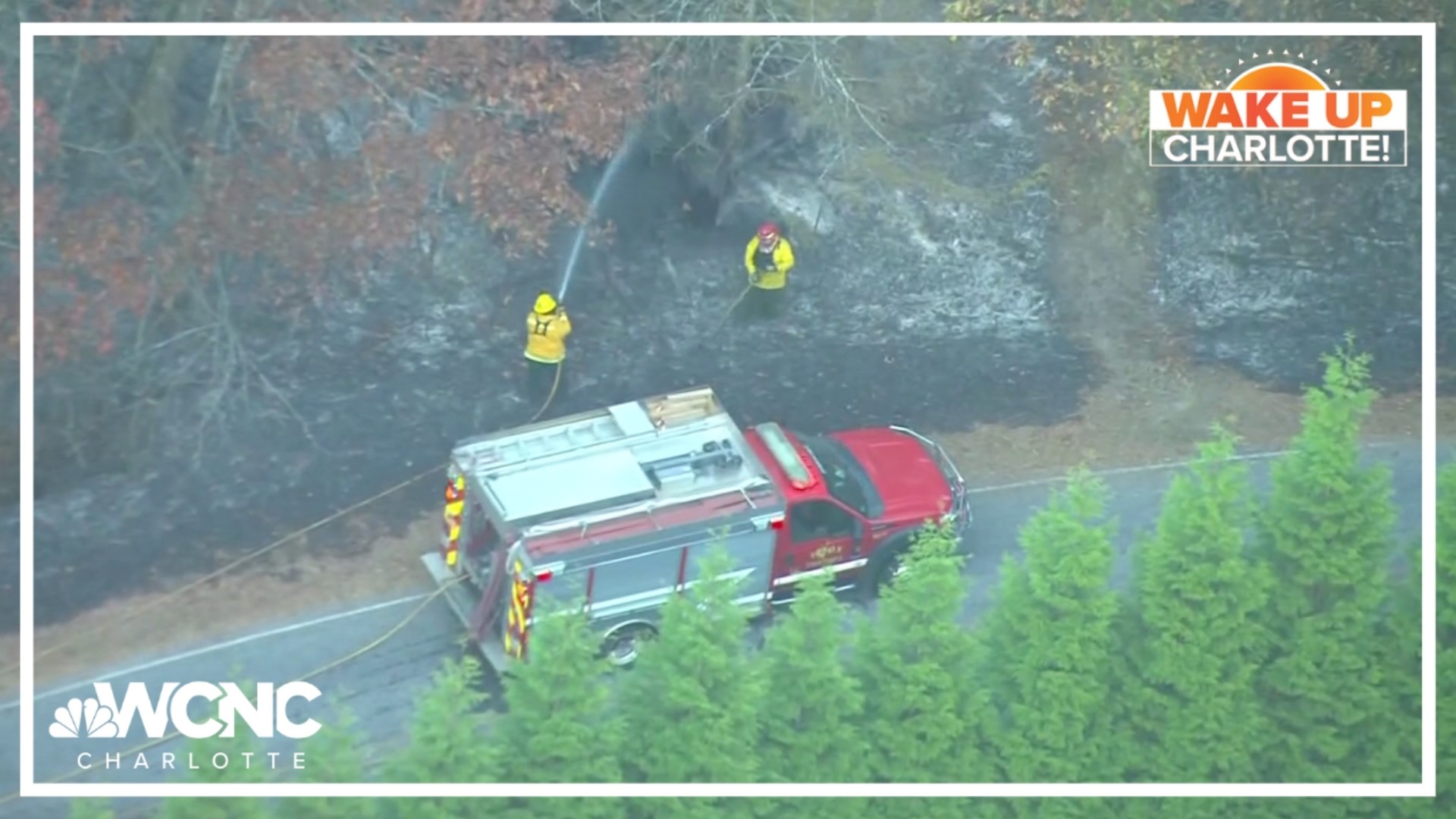CHARLOTTE, N.C. — Over 90% of North Carolina is now at least some level of drought conditions, per the U.S. Drought Monitor. This is the third consecutive fall, and the fourth in the past five years, in which parts of western North Carolina had severe drought conditions.
Severe drought in the Carolinas
Severe drought grew to 10% for North Carolina and over 6% for South Carolina, according to the Drought Monitor, which is published weekly on Thursday in collaboration with USDA, NOAA, and others.
During a severe drought, dry conditions are growing quickly. Water conservation measures may also be implemented for consumers and water system managers, who may limit their downstream releases or otherwise operate reservoirs to hold onto more water. Such actions are already underway with Duke Energy, which uses water from the Catawba River basin, including Lake Norman and Lake Wylie, to produce electricity at their hydroelectric power plants.
Last week, the power company asked residents living within 200 miles of the Catawba River to voluntarily help conserve water by reducing irrigation and cloth washing.
Duke Energy expects to temporarily close some boat ramps along lakes and rivers because of decreasing water levels.
“In order for us to move out of drought… we do need to bring our reservoir levels up, our streamflow up, and, hopefully, get some rain," Veronica Horvath with Charlotte Water said. "Be mindful of your water use when showering, doing your laundry and things like that, reducing your outdoor water use for watering your lawns.”
Recent freezing temperatures, which ushered in the end of the growing season, will already help conserve some water because homeowners and farmers will be irrigated less.
Officials monitoring drought
We reached out to Linwood Peele, who supervises water supply for the North Carolina Department of Environmental Quality, to see what their thoughts were on our current drought status. Peele sent WCNC Charlotte this statement:
We’re hopeful that this drought won’t have many long-term impacts. It’s emerging just a couple months before the winter, which is usually when we see lower demand for water and evaporation, allowing lakes and streams to recharge. In addition, an El Niño pattern has historically meant wetter than normal conditions for us.
If that happens this year, it could also help wipe away recent precipitation deficits. Notably, even a winter with near-normal or even slightly below-normal rainfall, like we had each of the past two years, is typically still enough to see overall improvements in drought conditions. As we sometimes say in the drought monitoring world, a little rain goes a long way at that time of year.
Long- and short-term drought effects
Drought can cause leaves to drop early and weaken trees making them more susceptible to storm damage. Drought can also cause soil to become too dry for winter and spring crops. Most notably, drought can increase the fire danger.
The North Carolina Forest Service has issued a burn ban across 14 counties in western North Carolina because of the fire danger. Gaston, Cleveland, and Burke counties are among the counties with the ban.
For the latest weather alerts, download the WCNC Charlotte mobile app and enable push notifications.
The Poplar Drive Fire in Henderson County's Edneyville community has burned 250 acres. It completely destroyed two homes. Residents are being evacuated away from the fire, which as of Monday morning, was only 5% contained.
"Thank you to all the first responders who have jumped into action to combat the ongoing wildfires in the western part of our state," North Carolina Gov. Roy Cooper said in a released statement. "I have been in touch with local leaders to provide assistance as necessary."
So to overcome drought
The obvious answer is more rain but it is more complicated than that.
Winter is the best time to replenish rainfall since vegetation does not need the water as much as it does in the spring.
The general rule is slow and steady lessens the drought. A slow rain over a long period of time will soak into the water table. Too much rain too quickly can run off as flooding before the environment has time to soak it in.
WCNC Charlotte’s Weather IQ YouTube channel gives detailed explainers from the WCNC Charlotte meteorologists to help you learn and understand weather, climate and science. Watch previous stories where you can raise your Weather IQ in their YouTube playlist and subscribe to get updated when new videos are uploaded.


